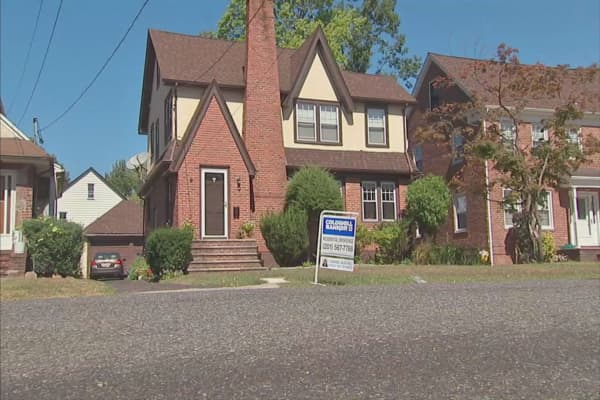While home prices have always been ruled by supply and demand, that calculation is on steroids in today's market, because of an acute housing shortage.
The shortage is worst at the low end of the market, which is why prices in that tier are rising at twice the pace of those on the high end of the market.
Nationally, home prices jumped 6.2 percent in September compared with September 2016, accelerating from the annual gains in previous months, according to the S&P Case-Shiller Index.
Prices have now recovered nearly 46 percent from the trough of the housing crash back in early 2012 and are nearly 6 percent higher than the peak of prices in 2006.
Of course, all real estate is local, and prices are rising more quickly in some markets than others. More telling is when you look at the price tiers in each market. The low end of most markets is where the most demand is, as millennials age into their homebuying years. It is also where the least supply is.
During the recession, builders dropped production by more than half their normal pace, and they have still not recovered fully. Lower-priced homes went into foreclosure at a rapid clip, and millions of them were bought by investors who turned some of them into rentals.
In fact, there are 5 million more single-family rental homes today than there were before the crash. The vast majority of these are entry-level homes that used to be part of the owner-occupant housing stock.
As a result of the shortage, home prices are rising much faster on the low end than on the high end, where there is more supply.
A survey by Zillow shows the difference in home price appreciation on the high end of the market versus the low end. The high end is defined as the top third of the market by price and the low end is the bottom third by price.
Annual price appreciation in selected markets
High End
|
Low End
| |
|---|---|---|
| National: | 3.70% | 8.40% |
| New York: | 6.40% | 8.40% |
| Los Angeles: | 5.60% | 7.60% |
| Chicago: | 1.60% | 6.60% |
| Boston: | 4.50% | 8.00% |
| Dallas: | 4.70% | 9.40% |
| Miami: | 2.10% | 9.60% |
| Denver: | 5.40% | 9.90% |
| Detroit: | 5.10% | 20.30% |
| Atlanta: | 4.00% | 13.20% |
| Washington, D.C. | 0.80% | 3.80% |
| San Francisco: | 5.20% | 9.10% |
Source: Zillow
The supply on the high end of the market is much greater, and the supply in the middle of the market, which is where most of the homebuilders target, is growing, but there is not much hope for supply on the low end.
"The past two months have shown promising signs of life from builders that have had difficulty meeting this intense demand in the face of rising land, lumber and labor prices," wrote Svenja Gudell, chief economist at Zillow. "But it's going to take a lot more than two good months to fully erase the housing deficit we're facing after years of underbuilding."
Investors hanging on to rentals
Investors are also unlikely to unload the lucrative rental properties they've been holding. In fact, the institutional market of rental investors has consolidated recently and streamlined its management. Institutional investors, led by Blackstone's Invitation Homes, now own just more than 200,000 single-family rental properties, worth an estimated $33 billion, according to Amherst Capital. And that is growing.
"Institutional activity in the single-family market continues to increase, driven by relatively attractive valuations, modestly strong home price appreciation and stable financing," said Sandeep Bordia, head of research and analytics at Amherst Capital. "We believe that evolving demographics, financial factors and shifting consumer preferences, will keep demand for single-family homes elevated over the coming years."
As a result, millennials who might have been buyers are turning instead to single-family rentals, which are often in good neighborhoods with good schools. That's what large-scale investors targeted when they entered the market following the housing crash. So while it may seem, from the national picture, that home prices are not as overheated as they were in the past few years, the story is far different when you focus on where the demand lies.
"Income growth has been decent lately, but it has not kept pace with rising housing costs, giving renters in particular the feeling of trying to hit a moving target as they attempt to save a down payment for the jump into homeownership," Zillow's Gudell said.
"There's a lot happening just under the surface of this otherwise fairly predictable market, and not all of it bodes well as we look ahead into 2018."


Không có nhận xét nào:
Đăng nhận xét